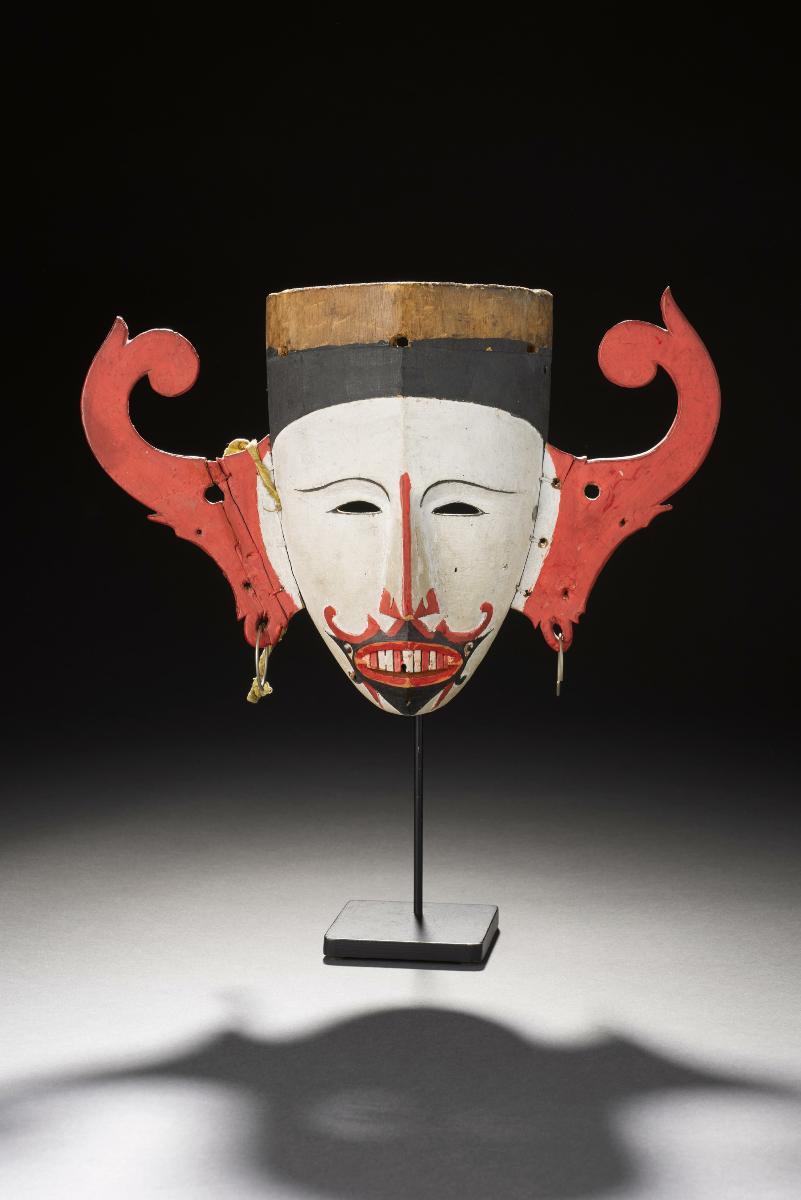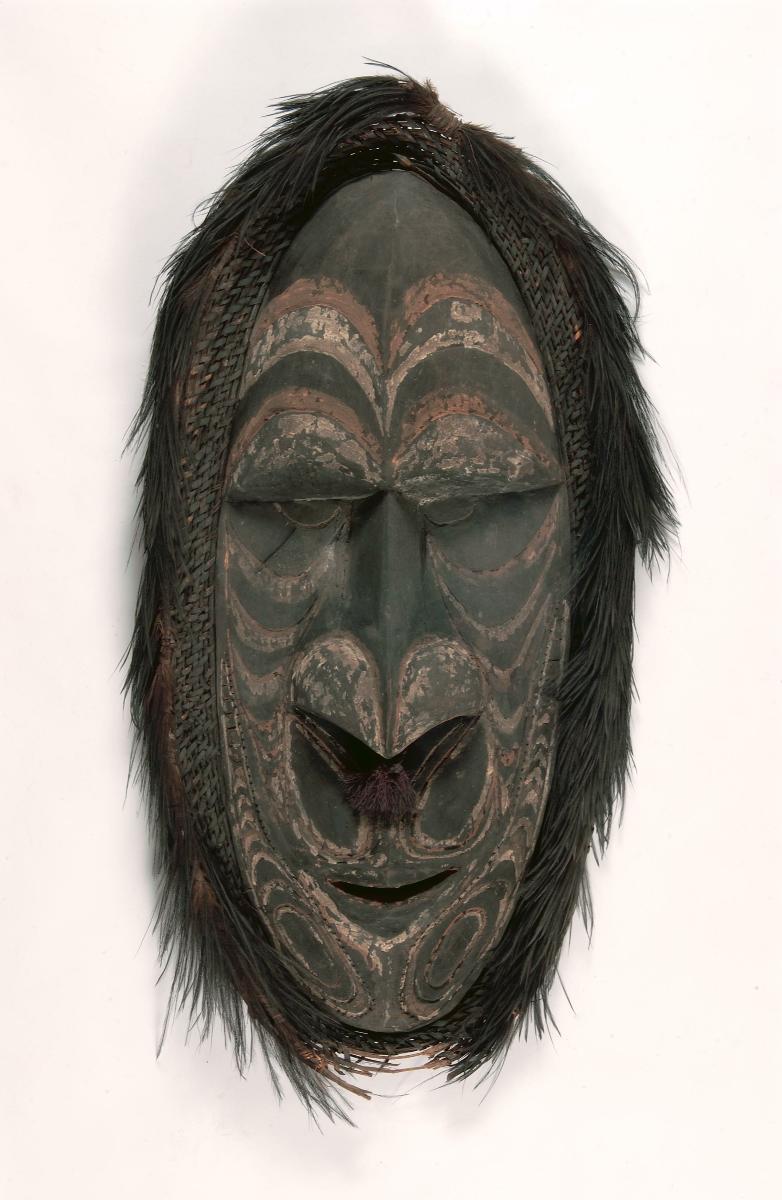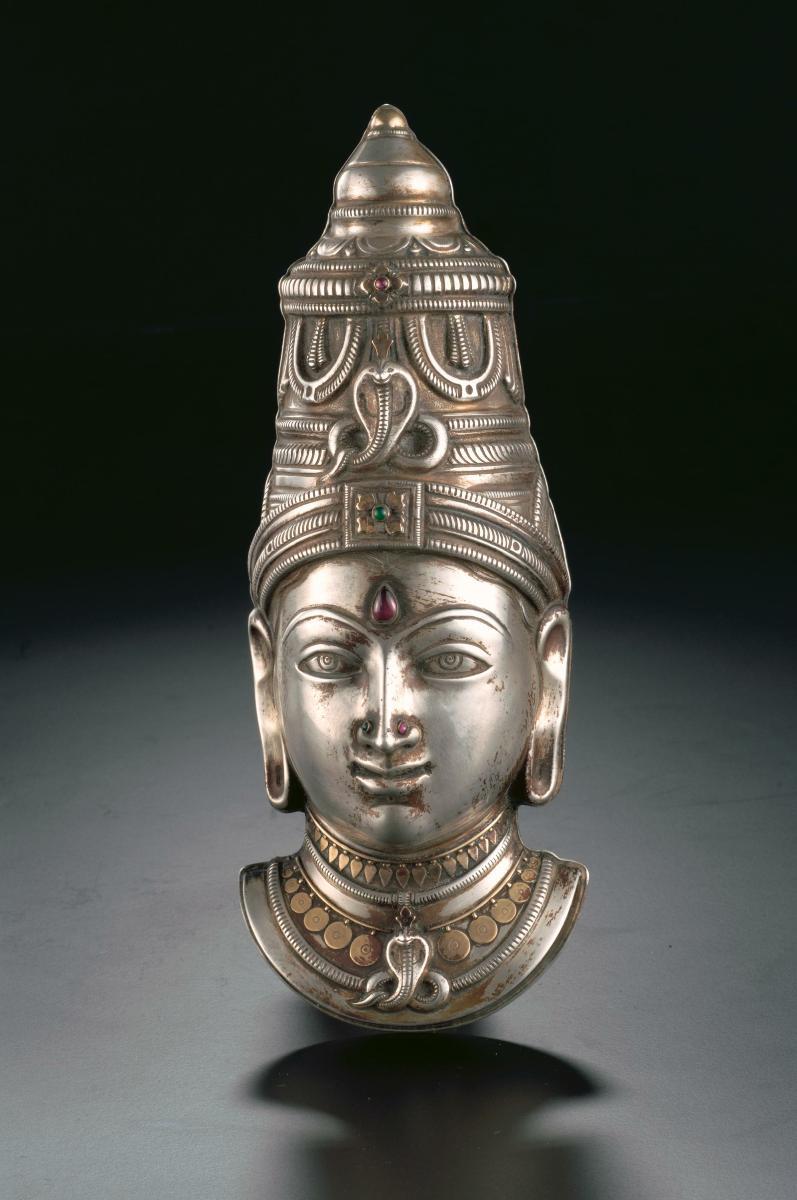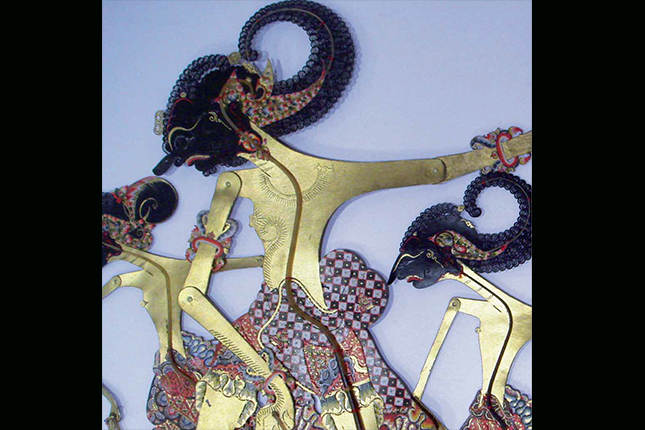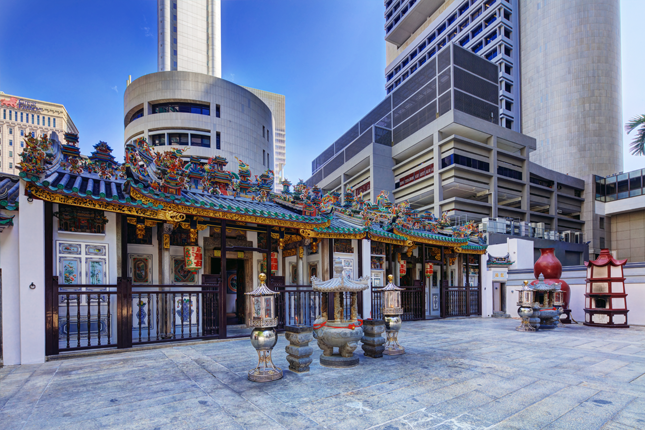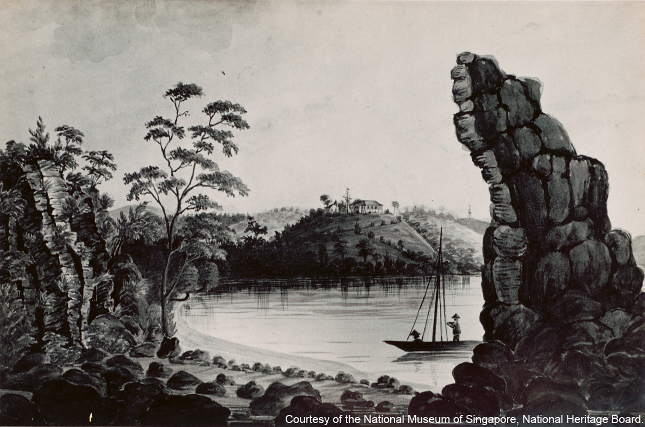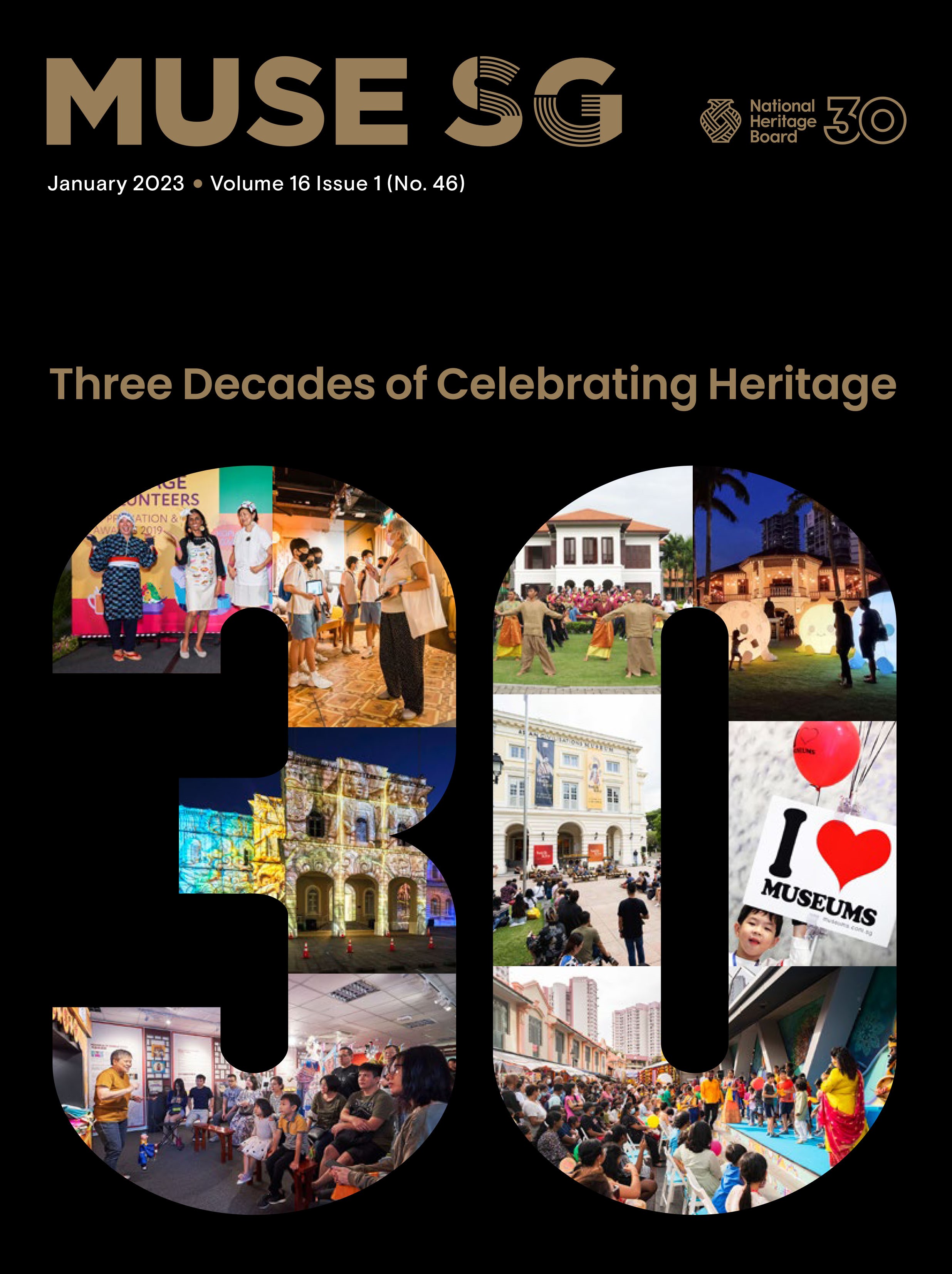Masks such as this one are called hudoq and often used in dance rituals performed as a way to communicate with spirits of ancestors, in hopes of keeping pestilence that can be harmful to rice fields and other forms of agriculture at bay. It can also serve to heal the sick and ward of any misfortune to the community. The dance, or tari hudoq is also a form of thanksgiving for the year’s good harvest and helps build stronger bonds among members of the communities. By using masks that represent figures who may be significant to the community, the dance attracts benevolent spirits and keeps away the malevolent ones. This hudoq, for example, is in a hepeu form, which is believed to represent a spirit of a king. The hudoq may also sometimes come in forms that represent certain animal spirits, such as birds, pigs, crocodiles and even dragons or naga.This particular hudoq may have been repainted at one point, which raises two interesting possibilities. The first is that it may have been repainted by a member of the community as a way of upkeeping the mask for more performances. The second, that it may have been repainted sometime after it was initially acquired from the community.




